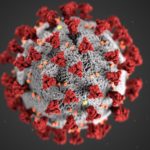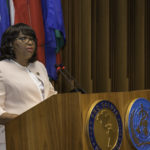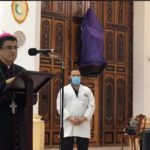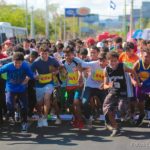When Daniel Ortega became president in 2007, the relationship between the Nicaraguan government and the independent press changed dramatically. It’s not that the independent press had enjoyed a particularly easy relationship with the previous administrations. However, the governments of Chamorro, Aleman, and Bolaños actions against the press were limited to withholding government advertising to outlets that were critical of their administrations. Moreover, no administration since 1990 has developed a centralized communication strategy that has even come close to what the Ortega-Murillo regime has managed to build over the course of 11 years.
The regime has consolidated a propaganda machine with a strong presence on national television, radio, and online media. Moreover, the regime uses existing laws to its advantage. For example, the regime can order every television broadcaster in the country to retransmit Ortega’s speeches. Refusal is not an option, as is the case in the United States, where television stations can say no to a presidential request for airtime, though they rarely do, even though transmitting can mean loss of ad revenue. However, ABC, CBS, NBC, and FOX said no to President Obama in 2009, and decided not air a major address on immigration.
So, what happened to ABC, CBS, NBC, and FOX? Nothing.
We don’t know what would happen to a Nicaraguan broadcaster if they skipped out of Ortega’s yearly July 19 address. No one has ever dared. However, we can guess, especially nowadays. Since April, the regime has persecuting independent journalists. Threats, illegal detentions, forced exile, and even outright violence against journalists are now commonplace.
On November 9, the
Fundacion Violeta Barrios de Chamorro (FVBCH) published the report “Nicaragua: Seis meses de crisis socio-política; días grises para el periodismo independiente” (Nicaragua: Six Months of Socio-Political Crisis: The Gray Days for Independent Journalism). La Prensa summarized the key findings in the graph below.
According to the report, independent journalists have have reported 420 violations of their rights. These range from aggressions and attacks against journalists, to cases of defamation, censorship, verbal harassment, judicial harassment, and administrative actions against independent media. Also included in the report is the death of journalist Angel Gahona, who was shot and killed while broadcasting live on Facebook.
The regime sentenced Brandon Lovo and Glen Slated for the murder, though many in Nicaragua, including Gahona’s family, believe that the two young men were railroaded to cover up for Orteguista Police officers.
Among television broadcasters, 100% Noticias has been singled out for special attention. 100% Noticias was among the four tv stations booted off the air in April. Then, in October, TELCOR, the government entity that oversees telecommunications in Nicaragua, ordered cable television providers to stop transmitting 100% News on channel 15. In a letter to cablers, TELCOR said that channel 15’s frequency belonged to the state, and had “not been [licensed] to any natural or legal person.” Cablers were told to use channel 15 as a repeater for channel 6, the official government television station (see embedded letter).
Cablers complied with TELCOR’s order by moving 100% News to a different channel
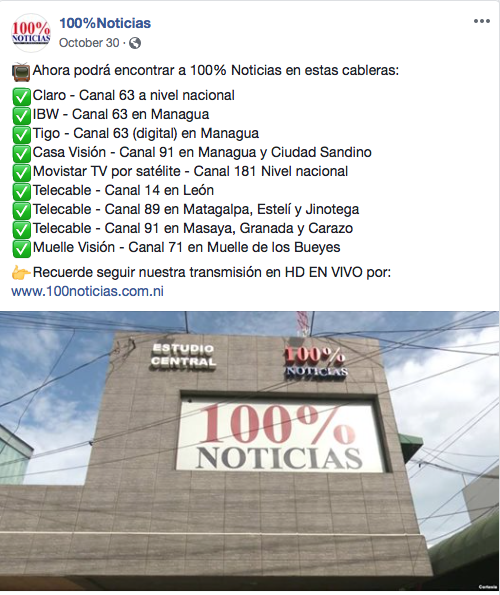
Now you can find 100% Noticias on these cable providers. Claro – Channel 63 (nationwide) IBW – Channel 63 (Managua) Tigo – Channel 63 (Managua) Case Vision – Channel 91 (Managua and Ciudad Sandino) Movistar (satellite) – Channel 181, nationwide Telecable – Channel 14, Leon; Channel 89, Matagalpa, Esteli, and Jinotega; Channel 91, Masaya, Granada, and Carazo. Muelle Vision – Channel 71, Muelle de los Bueyes.
Satellite signals expand the reach of any broadcaster to areas that are not served by cable. In Nicaragua, this means rural and remote areas that would be underserved otherwise.
The regime’s war against 100% Noticias does not stop there. Miguel Mora who owns and operates 100% Noticias, lives under constant harassment. He and his wife have been stopped multiple times by the Orteguista police. On Monday, December 3, the attacks escalated, as regime sympathizers formally accused Mora of inciting violence.
Mora’s broadcasts, according to the orteguista complainants, were directly responsible for the deaths of Gullermo Mendez, Roberto Castillo, Cristopher Castillo, and Gabriel de Jesus Vado, and of the disappearance of Bismark Martinez. Martinez’ wife even “demanded” that Mora disclose the whereabouts of her husband.
The Ortega Propaganda Machine does not limit it’s activities to the media. They follow the “Firehose of Falsehoods Propaganda Model” as discussed by Paul and Matthews (2016). According to Paul and Matthews, “The Russian propaganda model is high-volume and multichannel, and it disseminates messages without regard for the truth. It is also rapid, continuous, and repetitive […].” The Ortega Propaganda Machine acts in similar fashion. Its army of sockpuppets amplify the message pushed out through orteguista media outlets channels, such as Radio Ya and others. Below are few examples from Twitter. The first three Tweets were sent from handles that were created after April 18.
In addition, a video claiming that Mora ordered the assassination of a police officer is also being circulated. The video’s title is “Miguel Mora is behind the Assassination of Sub-Officer Gabriel de Jesus Vado.” Vado detained and searched Mora in July, but then released him. The encounter was caught on video, and Mora can be clearly heard saying “Gabriel de Jesus Vado Ruiz, I’ll never forget that name”. Six days later, Vado was kidnapped. He was killed and incinerated at the barricade in Monimbo. The incineration was a horrific act that was caught on video and circulated through social media. The new video, edited in the style of
NowThis, alleges a causal link between both events, a tactic that was also used in the allegations against Felix Maradiaga (t
o read my analysis of the Maradiaga video, click here).
Jaime Arellano, television host
Anibal Toruño, director of Radio Dario,
Alvaro Montalvan, director of Radio Mi Voz,
Luis Sanchez Sancho, editorial columnist at La Prensa,
Sergio Marin, journalist – La Prensa
Oswaldo Rivas, journalist – La Prensa
Hector Rosales, television presenter, Vos TV
Jorge Vallejos, journalist – Radio Dario
Sergio Leon, independent journalist
Leonardo Ortiz, journalist, Radio Atenas
Being a journalist is a dangerous profession in Nicaragua.

pic.twitter.com/J5oY2t7KyQ

